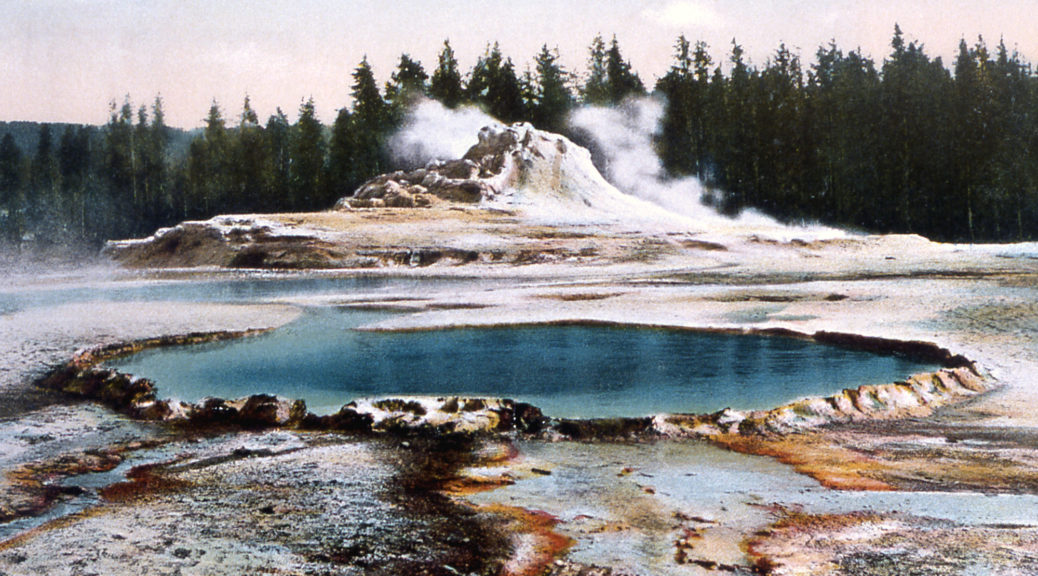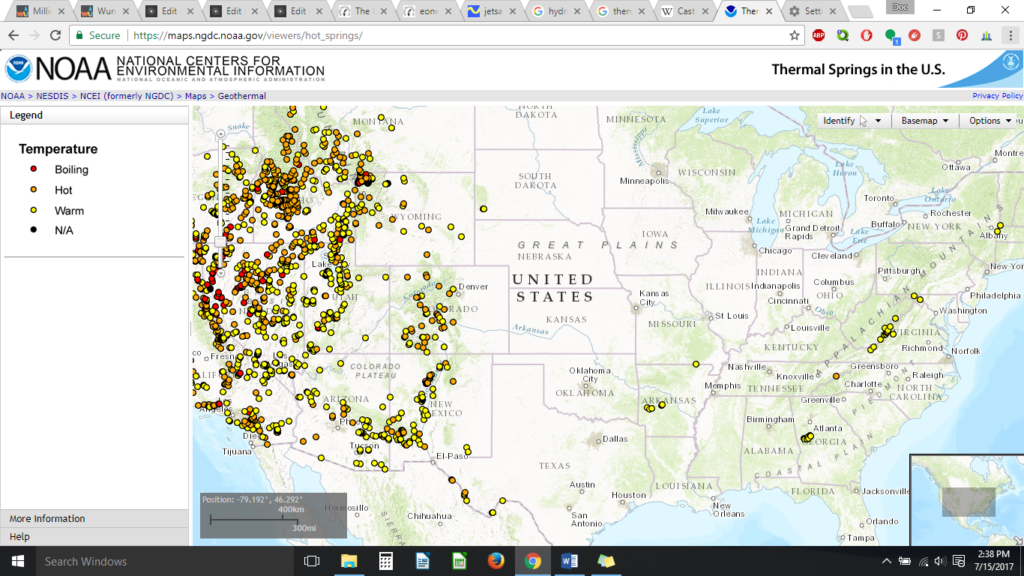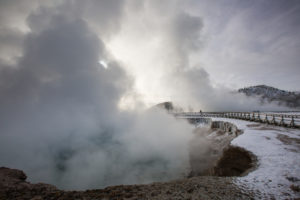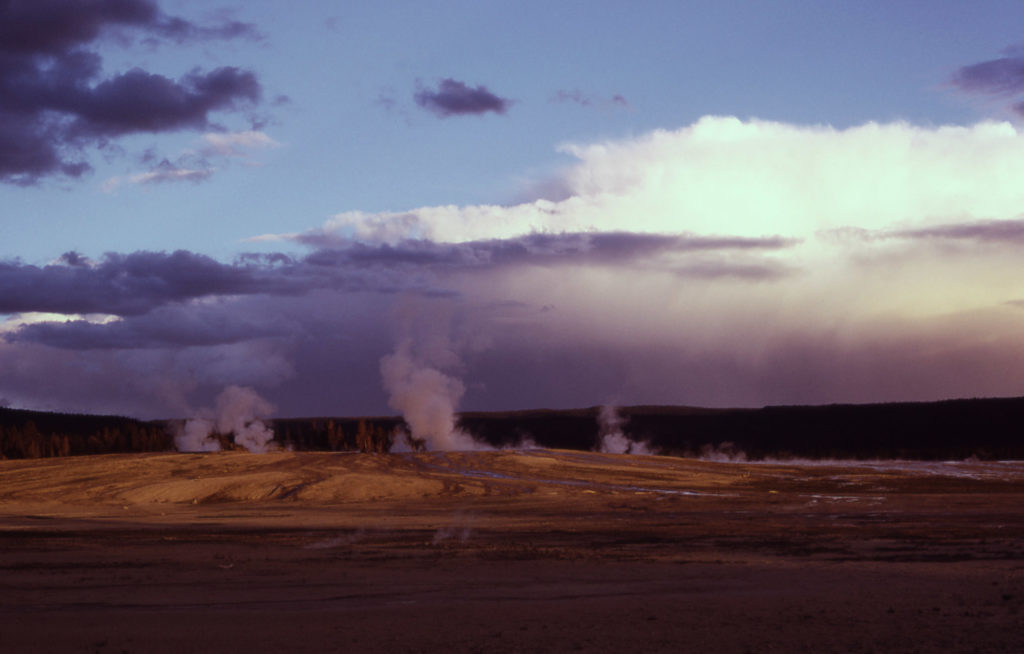
Death by Hot Spring
The world is full of hot spring enthusiasts who trek from hot spring to hot spring in order to soak their cares away and commune with other of their ilk. In fact, there is a whole subculture out there for “hot potting,” the practice of finding and visiting natural hot springs untouched by any development. What many hot potters do not realize is that hot springs can kill you or cause you lasting harm.
Hot Spring Facts
The US National Oceanic and Atmospheric Administration (NOAA) defines a “warm spring” as any spring with water temperatures between 20 and 50 °C (68 and 122 °F). A hot spring is any spring with water hotter than 50 °C (122 °F). People who don’t do geothermal science for a living tend not to make this distinction and will label any warm spring as a hot spring. For convenience, we will do the same here.

Injuries from Hot Spring Water
In general, bathing in water with a temperature greater than 39 °C (110 °F) is considered unsafe. Water temperature above 49 °C (120 °F) is hot enough to cause minor burns in healthy people and worse burns in the elderly or ill. In general, burn severity depends on the temperature of the water and the amount of time that water is in contact with skin. Obviously, stepping into any geothermal spring with water that’s too hot is something to be avoided.
Acidic Hot Spring Water Chemistry
There’s a problem with describing hot spring water chemistry because it’s highly variable. There are entire books on the chemistry of hot springs. Inspection of these will show that some hot springs have nasty water chemistry. Even at the height of the water-cure movement in the late nineteenth century, the infant United States Geological Survey (USGS) published the classic Monograph 13 documenting the discharge of mercury from hot springs in California. One early USGS geologist, Gerald Warren, documented hot springs with fluids more like sulfuric acid than water, in his 1915 Springs of California, a work so important that it is still cited today. In general, some hot springs are dangerously acidic and tend to form in areas of active volcanism.
Yellowstone and Hot Spring Deaths
The mecca of acidic hot springs, at least in North America, is the Yellowstone volcanic caldera. There have been more than 20 documented deaths at Yellowstone associated with hot springs. Many of these are described in detail to rival any good horror movie in Lee Whittlesey’s Death in Yellowstone (1995, Robert Rinehart Publishers, ISBN 978-1-57098-021-3). Almost all of them are gut-turners. Some of these are described below so if you have a queasy stomach, you may want to stop reading now.

- One of the worst of the Yellowstone deaths involved a man who dove into the hot spring-fed Celestine pool at the national park’s Fountain Paint Pots area, trying to rescue his dog who escaped from his car and fell in. Needless to say, the dog didn’t make it – and neither did his owner. The man managed to climb out of the pool with the help of a friend who in turn got second degree burns on his feet from the rescue. A witness to the event came to help, supporting the man who dove into the pool. The witness noted that victim’s eyes were completely leached of all color. When they tried to take the victim’s scalding hot shoes off, the skin on his feet came off too. The dying man spent the remaining day of his life blind and covered with third degree burns over 100% of his body. Celestine Pool has a temperature just above 94 °C (202 °F). It usually has a centralized spot of bubbling water and is classified as a boiling water spring. At Yellowstone’s elevation of greater than 2134 meters (7000 ft), water boils at 90 °C (194 °F). The body of the dog was never recovered because it was completely dissolved in the hot acidic water.

Fountain Paint Pots, Yellowstone - The man who dove into Celestine Pool was one of the lucky victims because he died in a day. The unlucky ones were rescued and then lingered in pain for however long it took to die. One woman from Washington DC was on a tour of Yellowstone in 1905, before boardwalks were built for the safety of visitors. In Upper Geyser Basin, home to Old Faithful, she took off her glasses to wipe the moisture off them. Without thinking, she stepped backward, not looking where she was going and fell hip deep into the pool of a boiling water hot spring. She was wearing thick petticoats and these got soaked with the spring water; their presence next to her burned legs kept inflicting a deeper level of burn since they were not removed right away. Apparently, decency was more important than good first aid in those days. In relentless pain, the poor woman lingered for three weeks in a local hotel before she died.
- In the 1960s, a nine year-old boy slipped on the boardwalk in Upper Geyser Basin and fell into the acidic boiling water hot spring known as Crested Pool. Park personnel recovered eight pounds of remains the next day, which was all that hadn’t dissolved yet.
- In June 2015, a 23 year-old man and his college-aged sister left the boardwalk in Norris Basin, the hottest and most dangerous of the geothermal areas at the park, and climbed a nearby hill looking for a hot spring where they might go hot potting. Yellowstone is a dangerous place. That’s why visitors are directed never to leave the boardwalks. That’s also why practices like hot potting are prohibited in the national park. What followed is tragic. The two siblings found a hot spring pool on the hill. While the sister filmed the occasion, her brother crouched down to test the water temperature with his finger. He slipped and fell in out of reach of his sister. That afternoon, the search and rescue team sent to recover the body had to leave the area due to a lightning storm. Lightning storms in Yellowstone are no joke and often deadly. The recovery team returned the next day but by then, there was nothing left to recover. The body had dissolved overnight in the acid waters of the hot spring.
Hot potters and tourists are sometimes naive over hot spring dangers. Many of the more recent hot spring deaths and accidents in Yellowstone involve people who disregarded the warnings issued by the park service, leaving the boardwalks or hiking off-trail to find places to hot pot. It’s better to investigate any hot spring beforehand with both NOAA temperature and USGS water chemistry data. And when at Yellowstone, don’t be an idiot: follow the rules. don’t leave the boardwalks and stay on the marked trails. Not doing so is a good way to court disaster.

